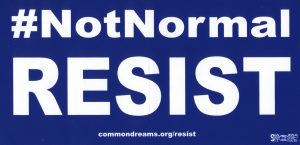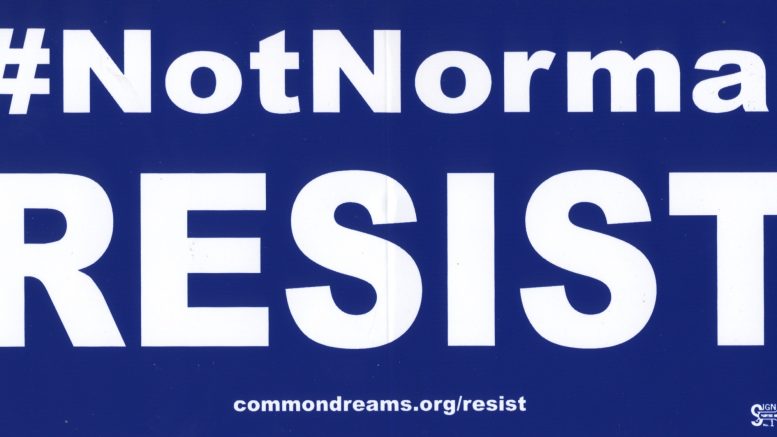
By Jake Johnson
Common Dreams (11/8/17)
In the United States, the 400 richest individuals now own more wealth than the bottom 64 percent of the population and the three richest own more wealth than the bottom 50 percent, while pervasive poverty means one in five households have zero or negative net worth.
Those are just several of the striking findings of Billionaire Bonanza 2017, a new report (pdf) published Wednesday by the Institute for Policy Studies (IPS) that explores in detail the speed with which the U.S. is becoming “a hereditary aristocracy of wealth and power.”
“Over recent decades, an incredibly disproportionate share of America’s income and wealth gains has flowed to the top of our economic spectrum. At the tip of that top sit the nation’s richest 400 individuals, a group that Forbes magazine has been tracking annually since 1982,” write IPS’s Chuck Collins and Josh Hoxie, the report’s authors. “Americans at the other end of our economic spectrum, meanwhile, watch their wages stagnate and savings dwindle.”
Collins and Hoxie are quick to note that the vast gulf that currently exists between the rich and everyone else is not the product of some inexplicable “natural phenomenon.” It is, rather, the result of “unfair economic policies that benefit those at the top at the expense of those at the bottom.”
“The wealthiest 25 individuals in the United States today hold more wealth than the bottom 56 percent of the U.S. population combined, 178 million people.”
Based on data recently made public by the Forbes 400 list and the Federal Reserve’s annual “Survey of Consumer Finances,” Billionaire Bonanza examines in detail the principal beneficiaries of America’s “deeply unbalanced economy”: the mega-rich.
“The wealthiest 25 individuals in the United States today own $1 trillion in combined assets,” the report notes. “These 25, a group equivalent to the active roster of a major league baseball team, hold more wealth than the bottom 56 percent of the U.S. population combined, 178 million people.”
The top 25 list features billionaires who have attained their vast riches through a variety of means, from inheritance to investing to founding a corporate giant like Amazon or Google. What unites these enormously wealthy individuals—aside from the fact that they are all white—is that they just keep getting richer, decade after decade.
No savings. No net worth. No security.
Average Americans, by contrast, have not fared nearly as well: a significant percentage of the U.S. households “have no savings at all or owe more than they own,” making them residents of what Collins and Hoxie term “Underwater Nation.”
“Excluding the value of the family car, 19 percent of U.S. households have zero or negative net worth,” the report notes. “Looking at this trend through the lens of race reveals that 30 percent of black households and 27 percent of Latino households have zero or negative wealth.”
In order to get a broader sense of the size of the chasm between rich and poor in the U.S., Collins and Hoxie place the net worth of the top one percent and the bottom one percent side by side.
“All combined, households in the bottom one percent have a combined negative net worth of $196 billion,” the report finds. “For comparison, the top one percent, a category holding the exact same number of people, have positive $33.4 trillion in combined net worth.”
Even mainstream institutions like the International Monetary Fund have acknowledged that such vast disparities of wealth and income are not sustainable, politically or economically. But as Billionaire Bonanza notes, the Trump administration—with the help of the GOP-controlled Congress—appears bent on making these disparities worse by slashing taxes for the wealthy while gutting programs that primarily benefit low-income and middle class Americans.
So the first priority, Collins and Hoxie note, is to “reject tax and other federal policies that will add oil to the inequality fire.”
In terms of going on the offensive once the “do no harm” principle is observed, the report makes several suggestions, including:
- Enacting higher marginal tax rates on individuals earning above $250,000 and $1 million;
- “Addressing the problem of hidden wealth,” which often leads to an underestimation of the level of wealth inequality;
- Instituting a tax on Wall Street financial transactions, which could bring in an estimated $350 billion in federal revenue over a decade;
- Eliminate the carried interest loophole, which allows hedge fund managers to “reclassify wage income as capital income” and pay less in taxes as a result; and
- Bolstering, rather than eliminating, the estate tax, which only affects a tiny number families.
As “the elite ranks of our billionaire class continue to pull apart from the rest of us,” the report notes, many Americans—including students saddled with loan debt, workers suffering from stagnant wages, and families who have seen “their wealth and savings evaporate”—are revolting against the system that allowed the richest to accumulate such wealth at the expense of so many.
“A century ago, a similar anti-inequality upsurge took on America’s vastly unequal distribution of income and wealth and, over the course of little more than a generation, fashioned a much more equal America,” Collins and Hoxie conclude. “We can do the same.”

